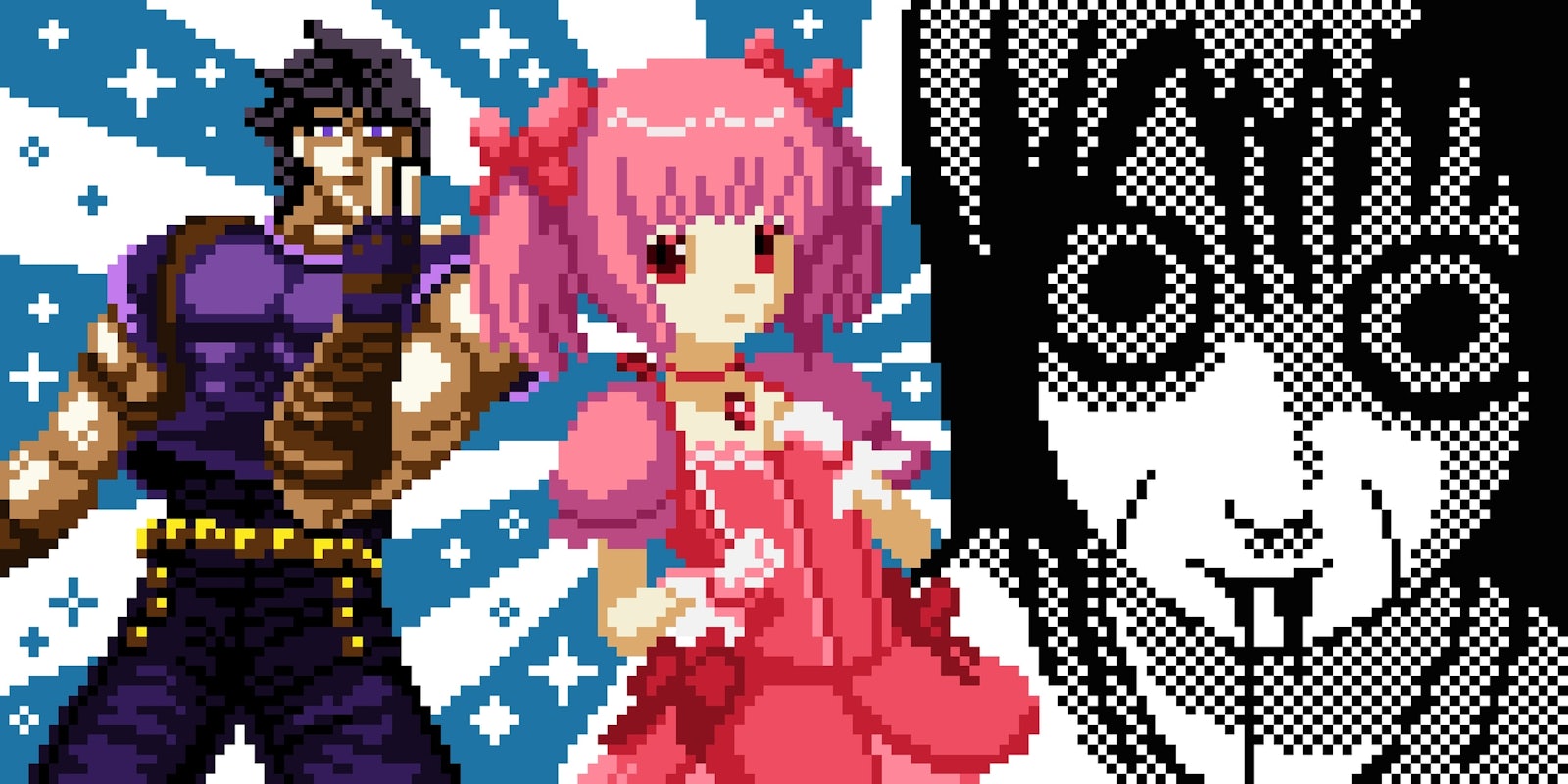Superheroes are ruling our nation’s media. From movies and TV shows to comic book tie-ins and merchandise, the heroes and villains of imprints like DC and Marvel are seemingly everywhere. Nerd culture is being heavily celebrated, paving the way for the wider export of anime and manga—that is, Japan’s comics and cartoons that delight fans of all ages.
Anime and manga have been around for generations and available in the U.S. for decades. There’s even an Anime Art Museum in Gainesville, Florida, to celebrate the artistry in a historical context as well as teach its finer points to students.
While anime denotes animation, to stateside otakus, manga is strictly a print operation. Some anime has been adapted for English-speaking audiences, while movie versions, like Ghost in the Shell, are being completely remade. Most translated manga still reads from right to left—just as its authors and illustrators intended for the original Japanese.
Perhaps the most helpful quirk of anime and manga is the way that it’s classified. Names like “shonen” and “yaoi” all mean something more than their literal translations. Our guide to the different types of anime and manga available worldwide will not only help you make sense of it all, but maybe help you find your new favorite shows and comics.
Kodomomuke
Literally translated to “intended for children,” Kodomomuke denotes the more saccharine anime and manga celebrated by all ages. Its family-friendliness is, in part, what makes it so recognizable. Characters like the robotic cat Doraemon are lauded in Japan. Their stories can be silly, humorous, and certainly educational for viewers just entering their formative years, heading to school, and exploring the world. Doraemon’s just happens to include a magic pocket stuffed with futuristic gadgets to help a young boy named Nobita.
Shonen/Shojo
The next age bracket, shonen denotes school-age children up to the age of 15 or so. The word is instantly recognizable because of the now-defunct manga anthology Shonen Jump and because, well, it’s male. According to Kotaku, though the word literally translate to “few years,” the anime and manga dubbed shonen features mostly guy protagonists. Shojo, or “young woman,” is its feminine counterpart.The folks behind Shonen Jump did create a Shojo Beat, though it ran for far fewer years and didn’t have quite the same reach as its Naruto and One Piece-heavy counterpart. Anime and manga like Fushigi Yuugi, Peach Girl, and Sailor Moon remain classics and, if anything, don’t get the recognition they deserve.
Seinen/Josei
https://www.youtube.com/watch?v=p2KlrgUUpWg
Heading toward adult subject matter, seinen and josei cater to the post 15-year-old demographic, intended for young adults and adult fans. Seinen is male oriented, while josei is the female equivalent, though there’s far more overlap than with shonen and shojo. The acclaimed Ghost in the Shell is a prime example, starring cyborg badass Major Motoko Kusanagi. Her captivating origin story has been adapted countless times and will once again be introduced to audiences via the coming Scarlett Johansson movie of the same name (whitewashing controversies and all).
Hentai
https://www.youtube.com/watch?v=NNDZla_qQDI
Do you really think you’d get through a manga and anime list without seeing the smutty side of the media? Of course not. Hentai heats things up with erotic storylines that run the gamut of vanilla softcore to wild, vibrant fetishes. The Japanese word “hentai” translates to “pervert,” and it has a lot of significance—and shame—behind it, having originally been used to label others as perverse. Hentai has since been reclaimed as a celebration of the artistry behind getting off. The anime Tentacles and Witches is one of the best contemporary examples of good storytelling, eroticism, and the genre’s more supernatural aspects.Yaoi and Bara/Yuri
https://www.youtube.com/watch?v=xMIgBboTsAg
Hentai’s a bit of a catchall for erotic anime and manga, though there are subgenres and categories that don’t quite fit its hardcore exterior. Yaoi is gay hentai and erotica, typically geared towards women readers and often written and illustrated by women. Its counterpart is bara: gay hentai and erotica written by gay men, for gay men. Yaoi and bara only began to break through in the U.S. in the ’90s, with female illustrator Maki Murakami paving the way thanks to her pivotal yaoi Gravitation. Yuri denotes lesbian hentai and erotica and has come a long way since it first hit the scene as a secondary element in storylines. Classics like Revolutionary Girl Utena and Seraphim Call hit the airwaves right alongside Gravitation, opening viewers up to a rich world of same-sex love that’s only grown all the more popular.
